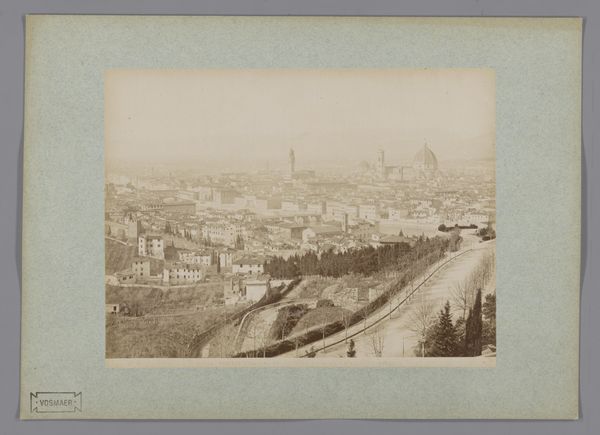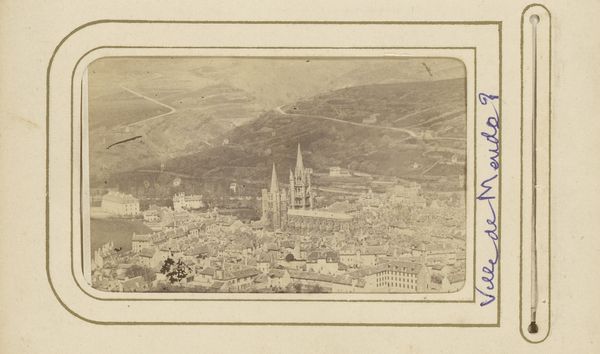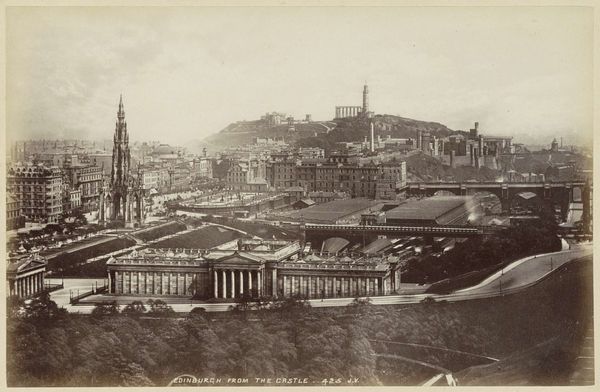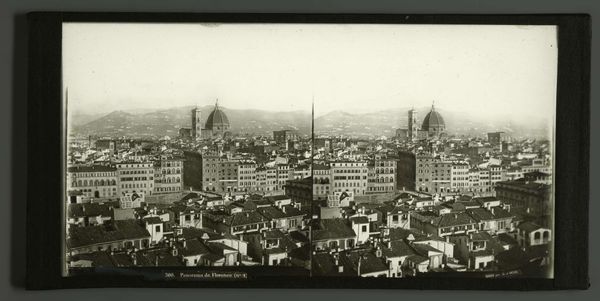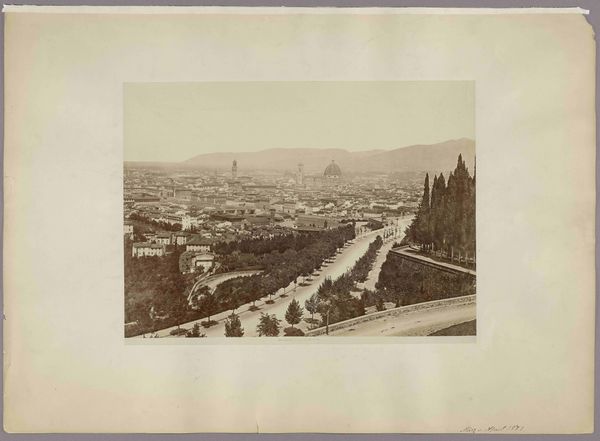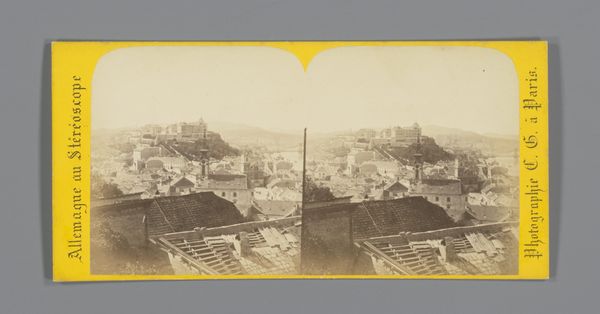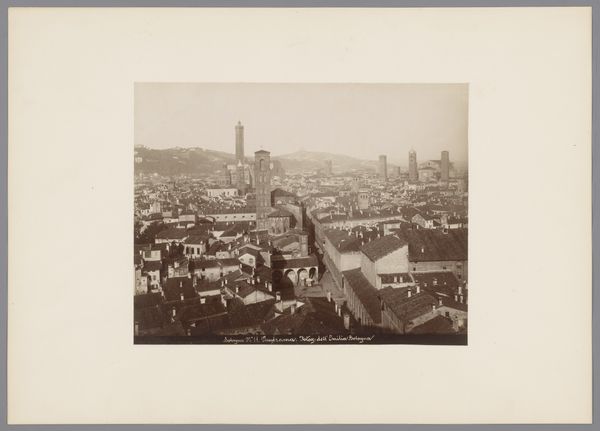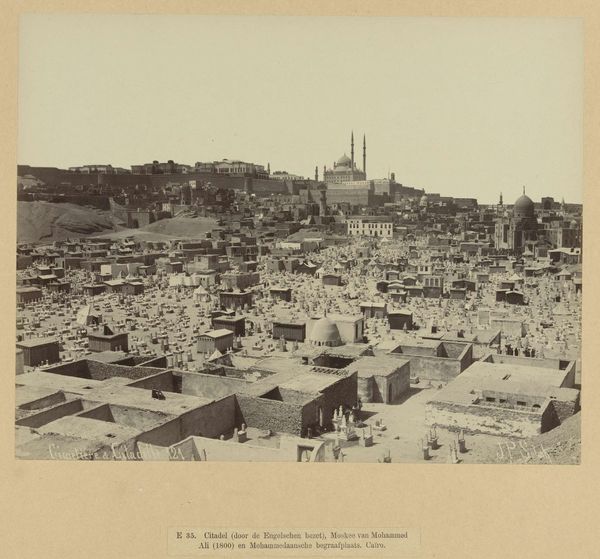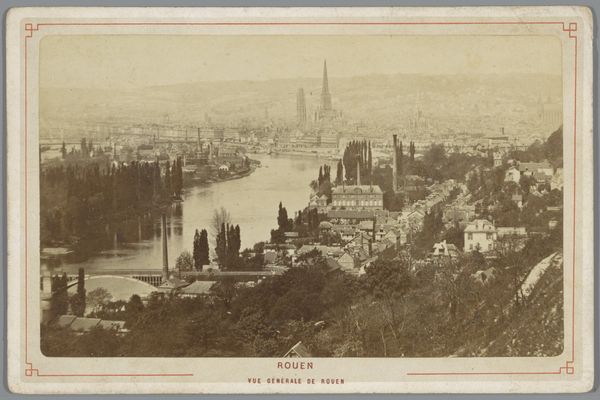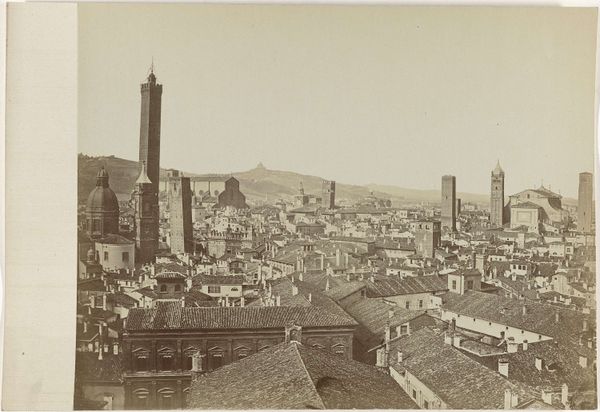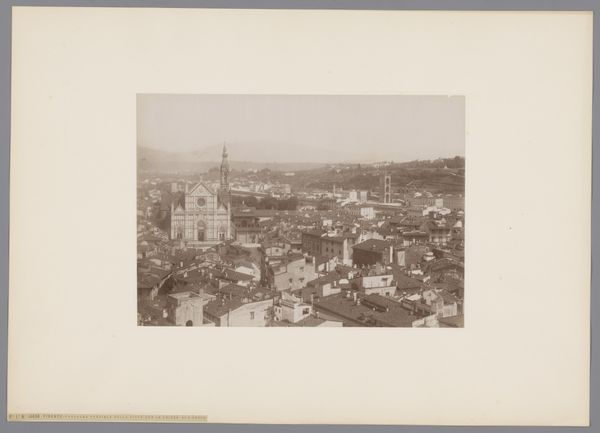
print, photography, gelatin-silver-print
# print
#
landscape
#
photography
#
gelatin-silver-print
#
cityscape
#
realism
Dimensions: 21.9 x 33.3 cm (8 5/8 x 13 1/8 in. )
Copyright: Public Domain
Curator: Looking at this image, the whole scene is washed with this wistful melancholy. It is quite atmospheric. Editor: That's a beautiful observation. We're looking at Edmond Bacot’s “Vue générale de Rouen,” a gelatin-silver print created between 1852 and 1854. It's currently held at the Metropolitan Museum of Art. I think what grabs me most is the city sprawling towards the horizon under such a weighty sky. Curator: Weighty is right! It feels like a forgotten memory, all soft focus and diffused light. There's a loneliness there, despite the busy cityscape. Does that make sense? It reminds me a bit of the feeling you get from daguerreotypes, those early photographs. Editor: Absolutely. The photograph, while offering this ostensibly objective representation of the city, can never escape the human element embedded in both its production and its consumption. The selection of the vantage point, and indeed, the technological limitations, subtly impact meaning. What do you think about this idea in light of photographic realism? Curator: I agree. The imperfections, that soft focus, even what appear to be some chemical anomalies, add texture—making it, dare I say, even more "real" than a clinical depiction would be. Because, let's be honest, how often do we perceive anything without some degree of subjective filtering? It is never just data. Editor: Yes! That tension is palpable. This work occupies an important historical moment—Rouen experienced significant industrialization around this period, led primarily by textile production. This photograph is not just documenting architecture; it’s indirectly gesturing towards social and economic shifts within a complex historical context. Do you perceive that industrial activity? Curator: It’s subtly there, like a breath held in, a pressure just beneath the surface of what looks like calm. There are little signs that something is rumbling on and you see traces in the air near the industrial areas, which add to the slightly haunting feeling. It invites us to ponder change and its impact. Editor: Ultimately, I believe "Vue générale de Rouen" stands as a compelling reminder of how seemingly objective mediums like photography are laden with intentionality, offering multifaceted interpretations of our ever-evolving human experience. Curator: It certainly leaves me thinking about how the past speaks to us—a hushed but insistent voice. Almost like an echo of memory, just at the very edge.
Comments
No comments
Be the first to comment and join the conversation on the ultimate creative platform.
